"Oh my God, it's so thrilling, this has way more horsepower than I've ever driven before," said Brad Pitt, one of Hollywood's sexiest male stars, about his first experience driving an F1 car.
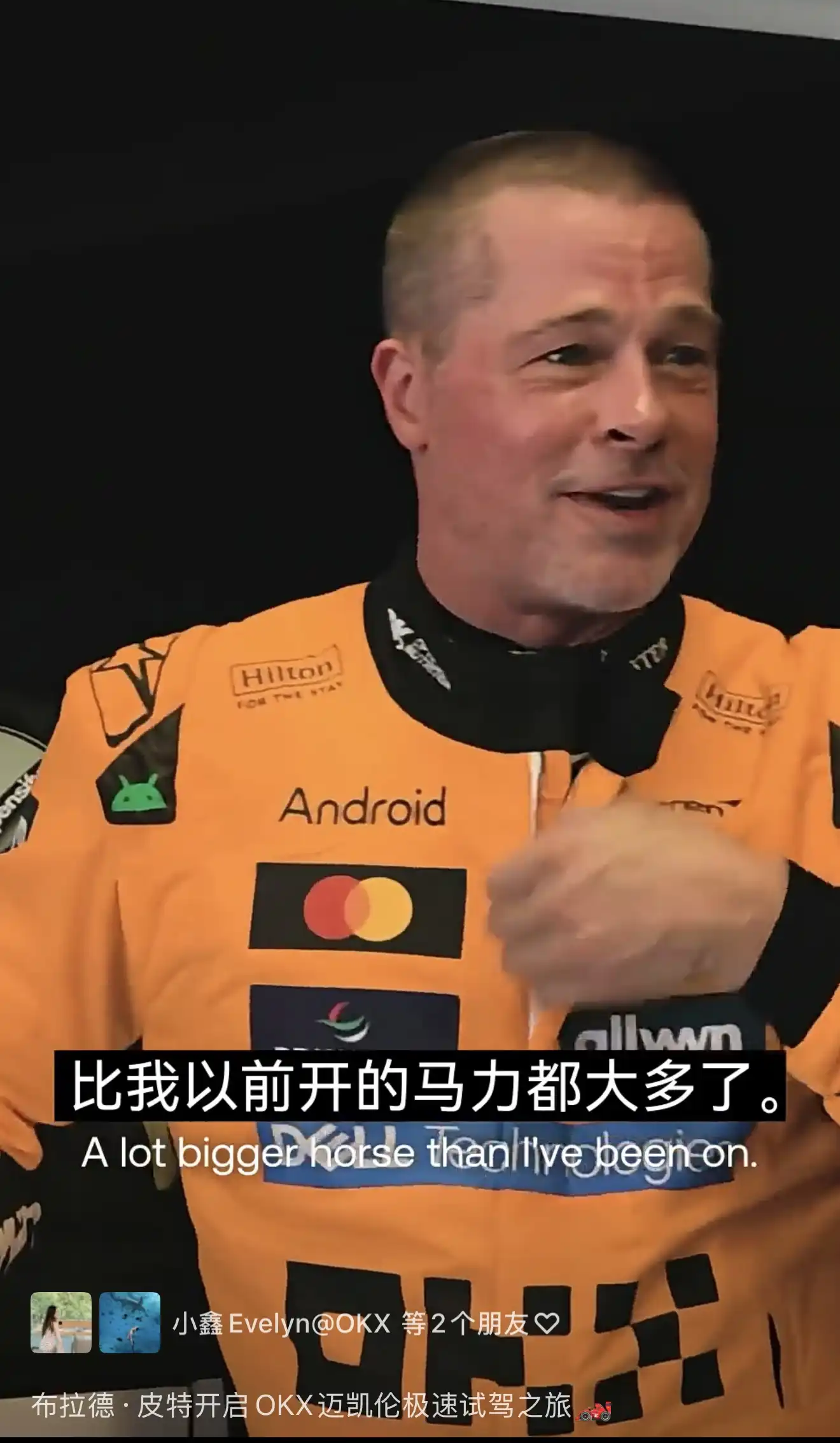
This month in theaters, Brad Pitt stars in "F1: The Movie," which grossed $56 million in its opening week in North America and surpassed $144 million globally, becoming the first true box office blockbuster in Apple's film history.
This nearly $300 million film has garnered widespread attention not only for its IMAX real-life shooting and real team participation but also for attracting the interest of the cryptocurrency community. During the film's promotional period, Brad Pitt's race car and driver suit featured a logo familiar to the crypto crowd—OKX.
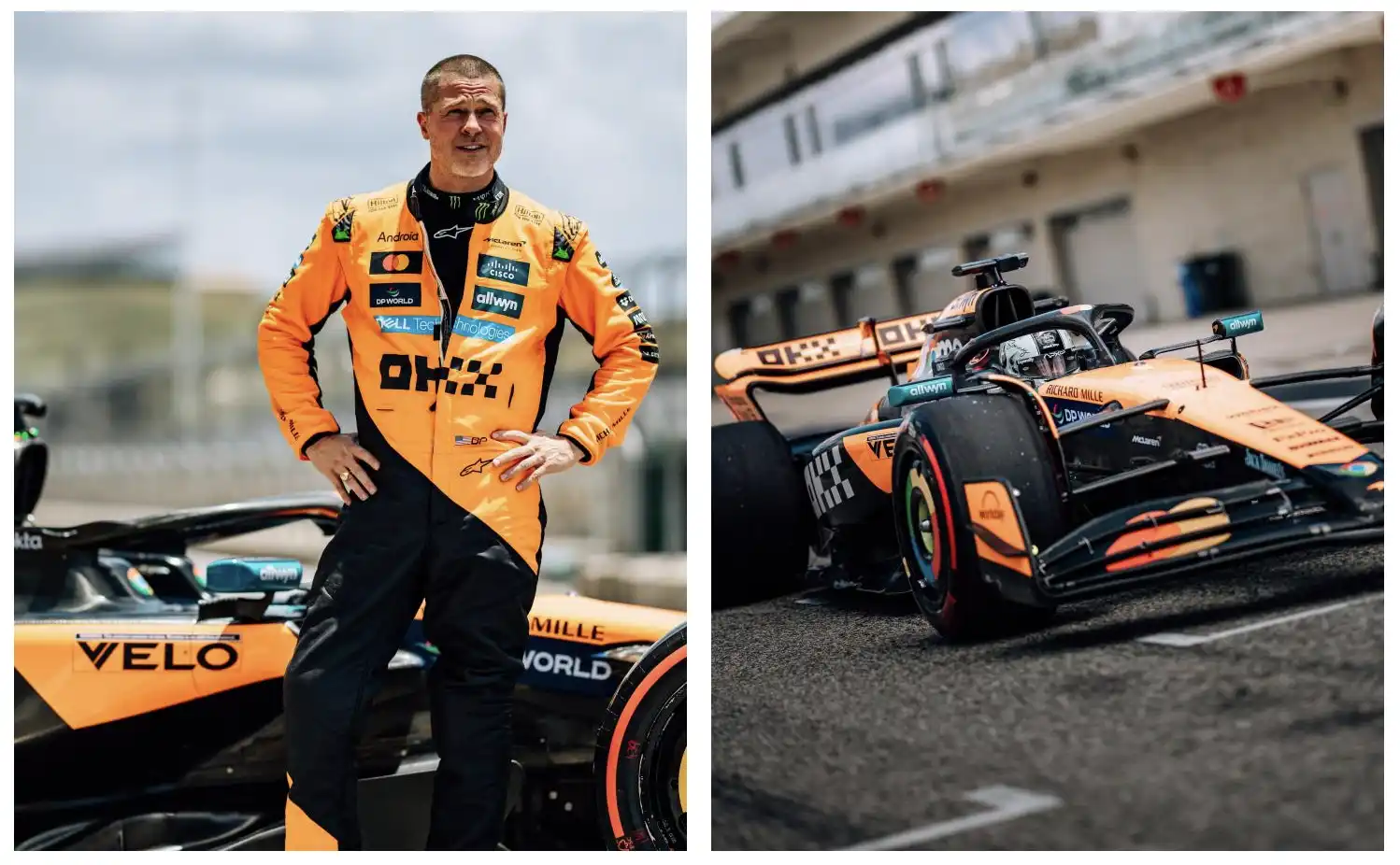
Since the FTX era in 2021, cryptocurrency trading platforms led by FTX and Crypto.com have established multi-season sponsorships with top F1 teams, leading to increasingly dense collaborations between crypto trading platforms and F1's elite teams.
Today, Rhythm BlockBeats takes a look at the "sponsors" from the crypto world that have supported F1 teams.
Which F1 teams have been sponsored by crypto "sponsors"?
FTX: Mercedes-AMG Petronas
In September 2021, FTX signed a multi-season sponsorship agreement with the Mercedes-AMG Petronas F1 team, with the amount undisclosed.
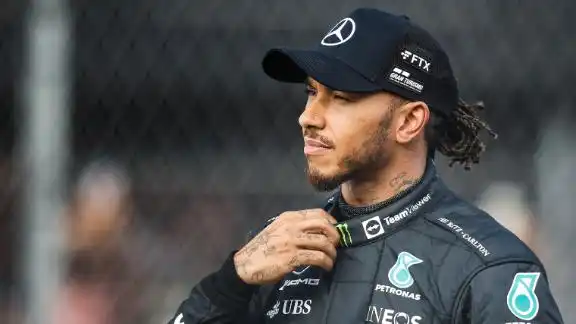
FTX's logo was prominently displayed on the car's rear wing, the front edge of the cockpit, and even on the driver's cap.
At that time, FTX had been established for less than two years but had already invested over $345 million in sports marketing. FTX chose Mercedes, a team that won the Constructors' and Drivers' Championships for seven consecutive years from 2014 to 2020, believing it would further enhance FTX's platform status.
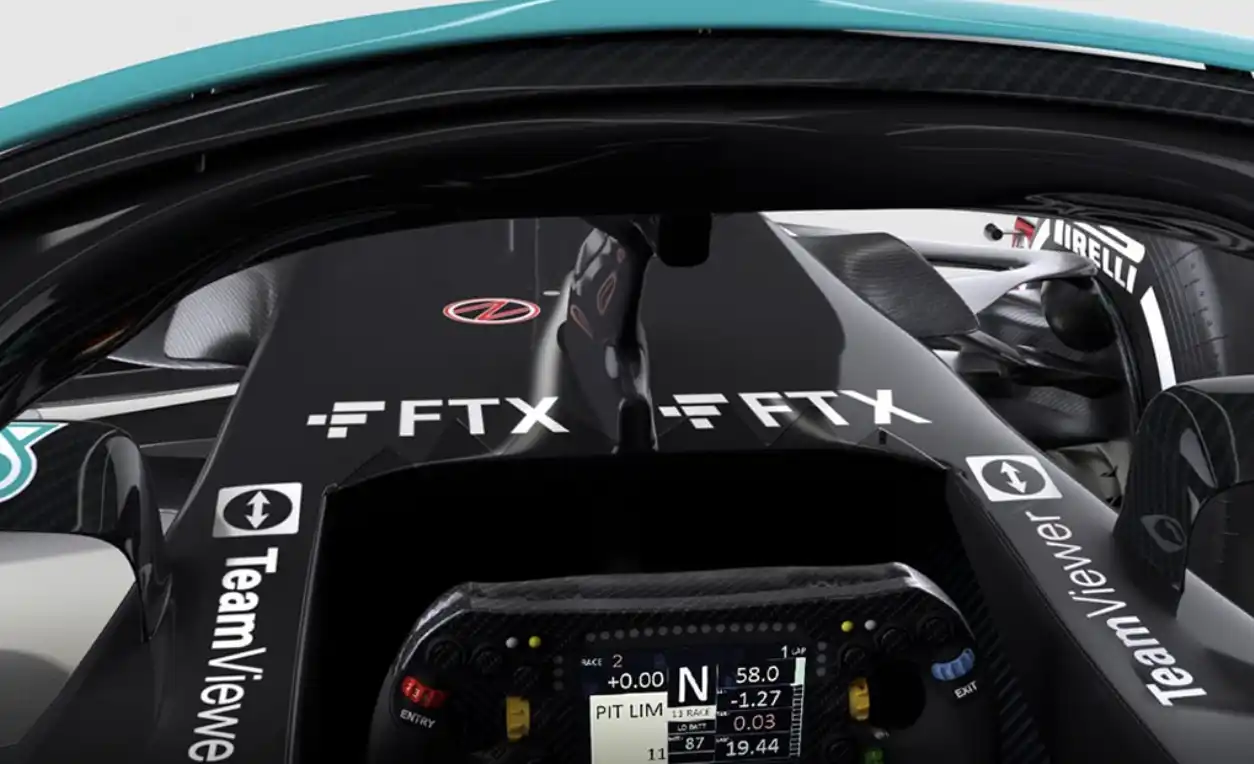
However, just a year later, in November 2022, FTX collapsed. Mercedes immediately announced the suspension of all collaborations, urgently removing the FTX logo from the cars and surrounding equipment before the Brazilian Grand Prix, and declared it would no longer continue the partnership. Many media outlets pointed out that this case marked the risks of blindly investing in the crypto market by F1.
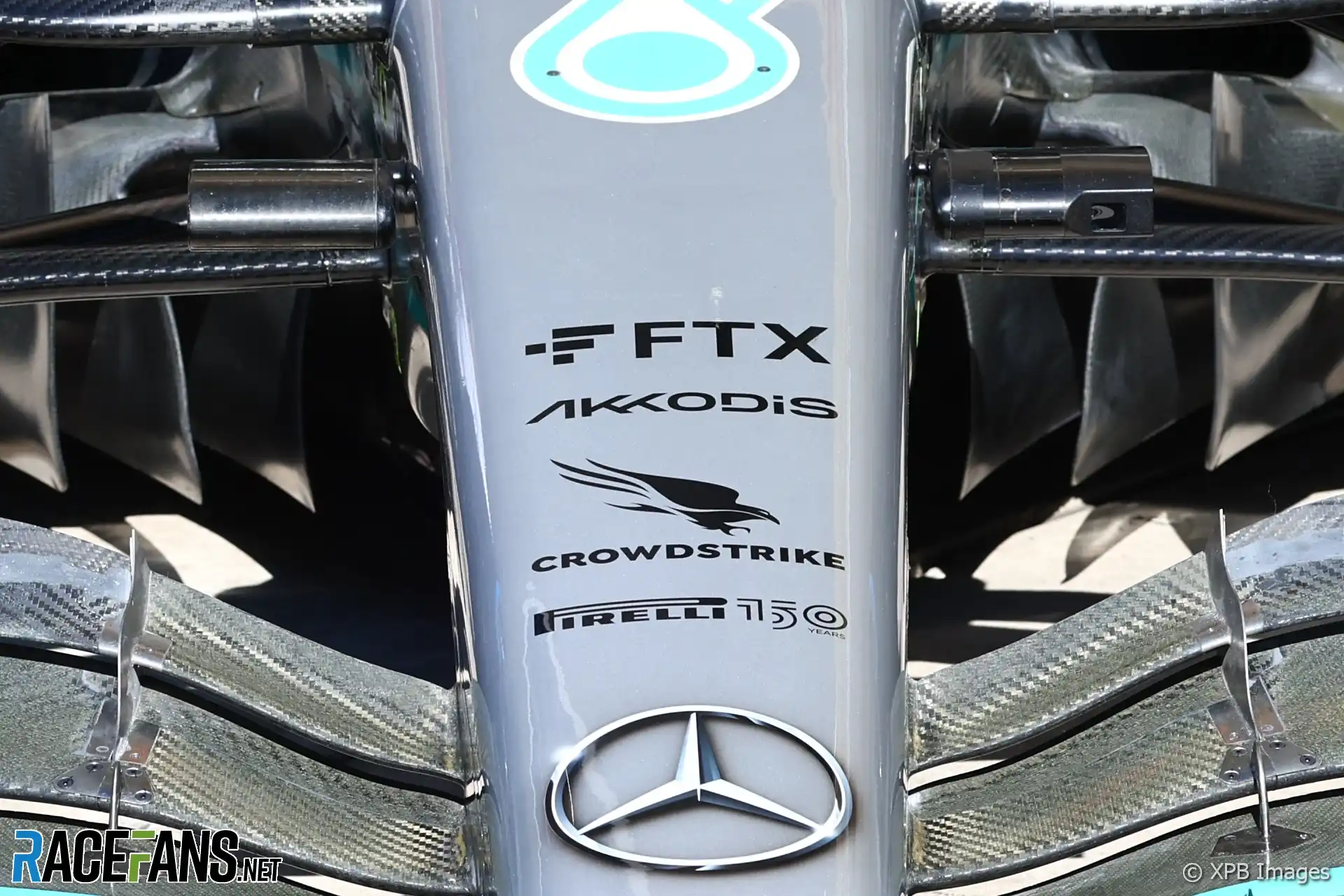
Mercedes' commercial director also publicly expressed caution regarding crypto sponsorships, adopting a more cautious approach and maintaining distance from any crypto institutions. Currently, Mercedes remains one of the four teams in F1 that has not partnered with any crypto platform, alongside Ferrari, Haas, and AlphaTauri.
Crypto.com: F1 Official & Aston Martin
In March 2021, Crypto.com made its first foray into F1, announcing a multi-season sponsorship agreement with the Aston Martin Cognizant F1 team. Its brand logo appeared on the AMR22 car's side pods, driver suits, and related equipment.
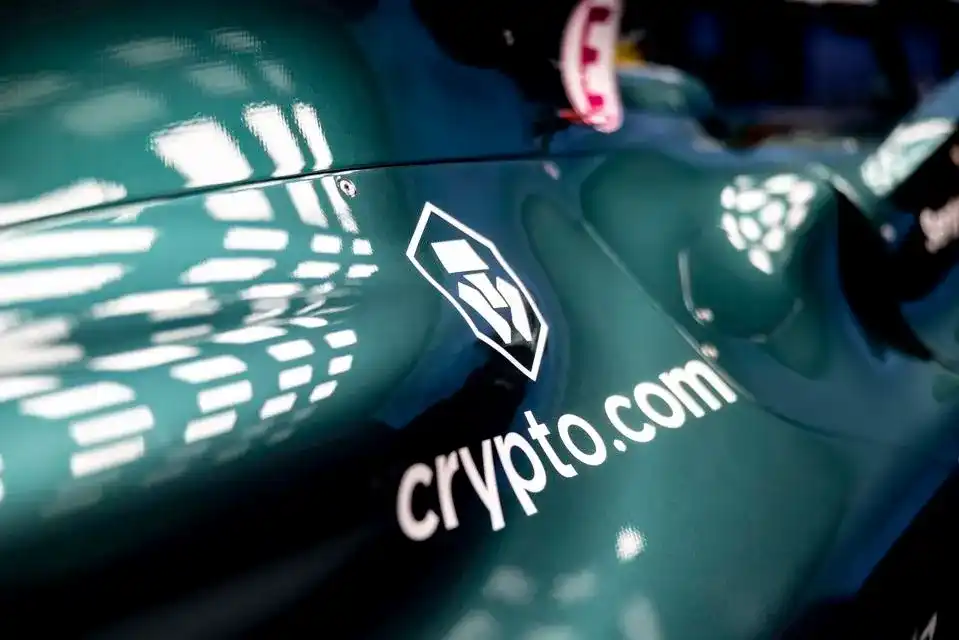
Not satisfied with this, three months later, Crypto.com signed a five-year exclusive sponsorship agreement worth approximately $100 million with F1, officially becoming F1's "official cryptocurrency partner." Crypto.com also took this opportunity to launch a series of F1-themed NFT products on its platform, gaining event-level exposure, marking the first large-scale entry of the crypto world into top F1 events.
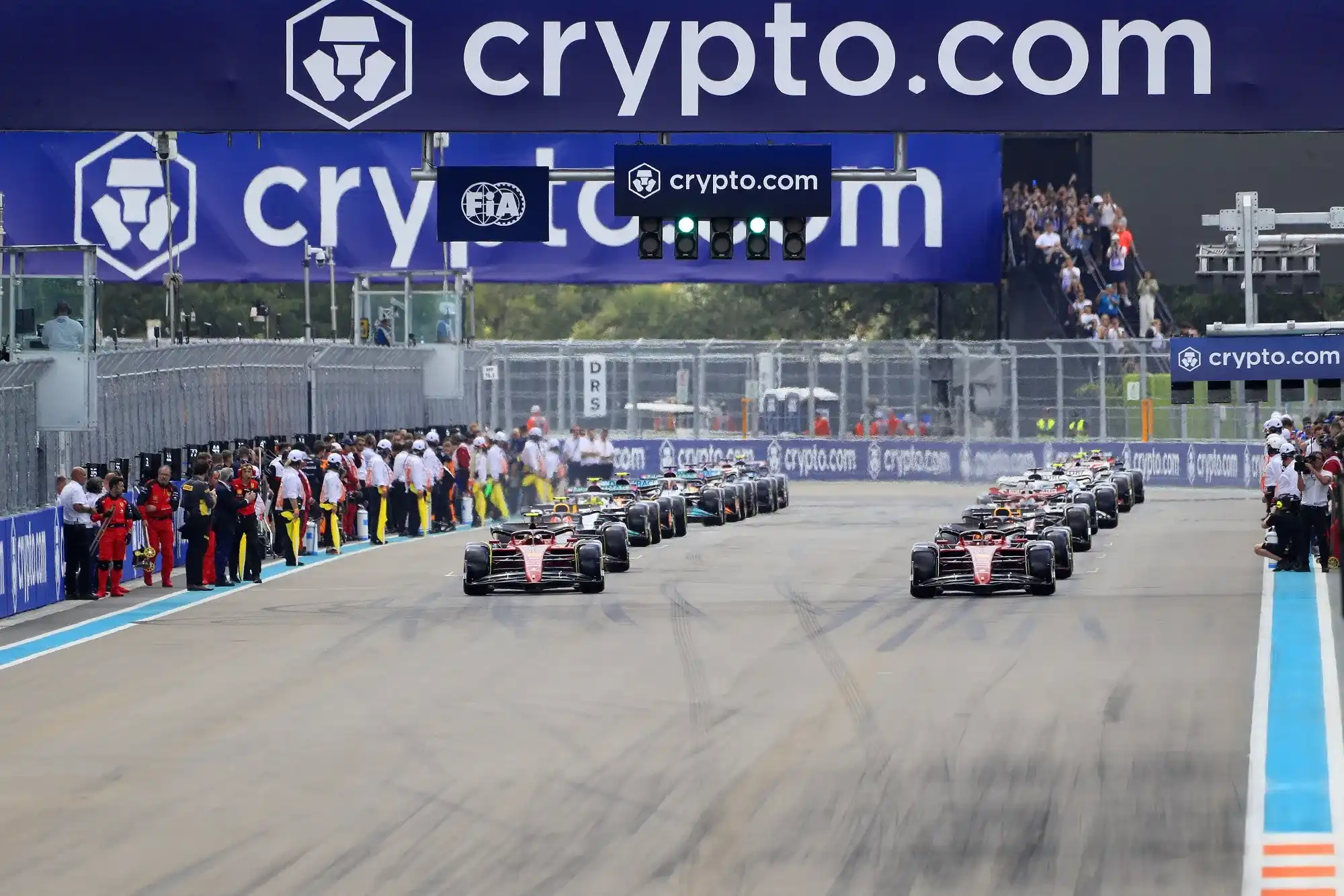
By the end of 2024, this partnership will see further expansion. Crypto.com announced it has renewed its agreement with F1 until 2030, becoming one of the longest-term sponsors from the crypto world and one of the earliest trading platforms to sponsor an F1 team.
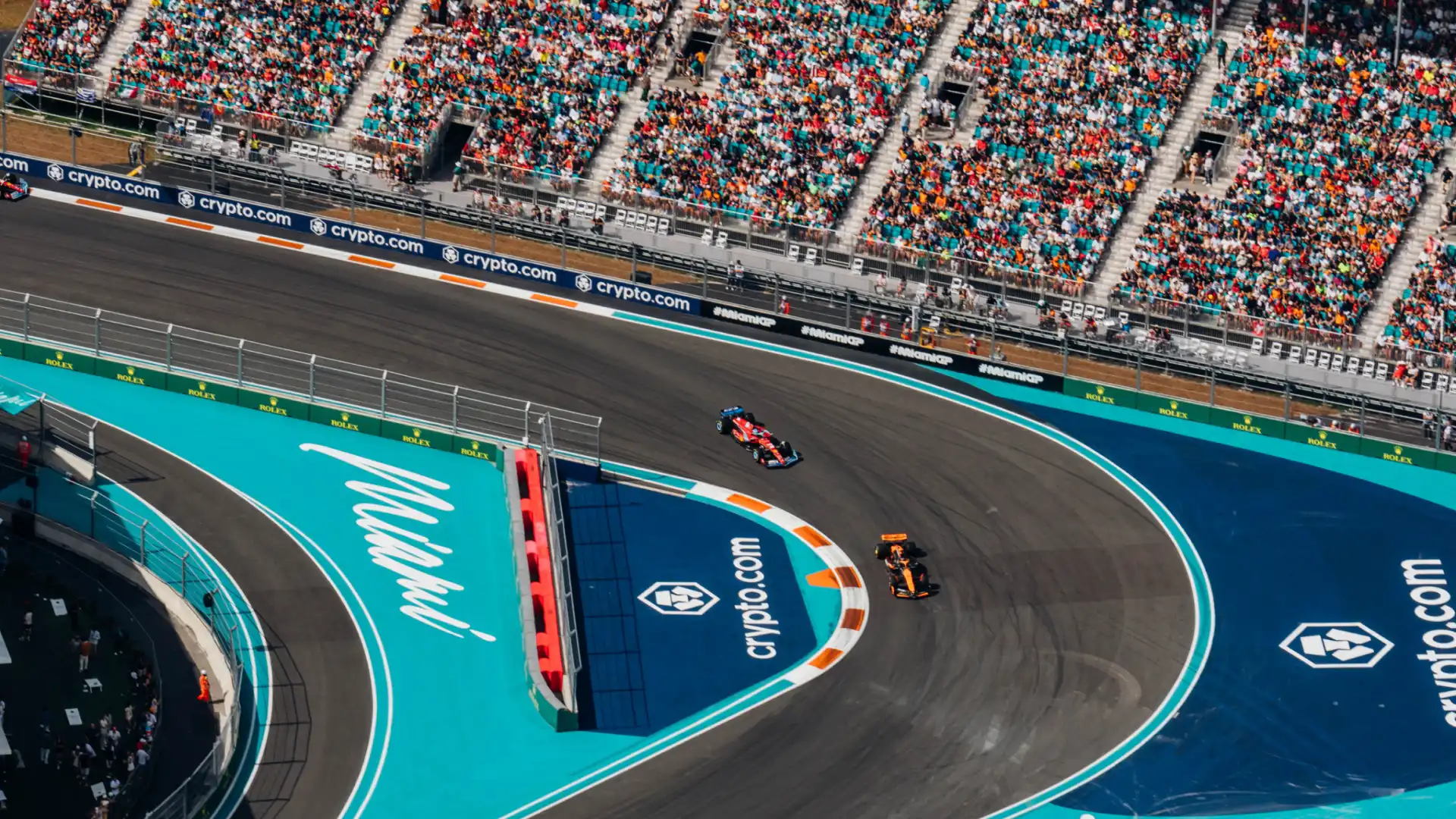
Coinbase: Aston Martin Aramco F1
After Trump's presidency, the crypto industry entered a new period of growth, and even conservative trading platforms like Coinbase became more active.
In February 2025, Coinbase announced it would become the official crypto partner of the Aston Martin Aramco F1 team, with a multi-year agreement whose amount has not been disclosed. This marks Coinbase's first venture into F1 team sponsorship.
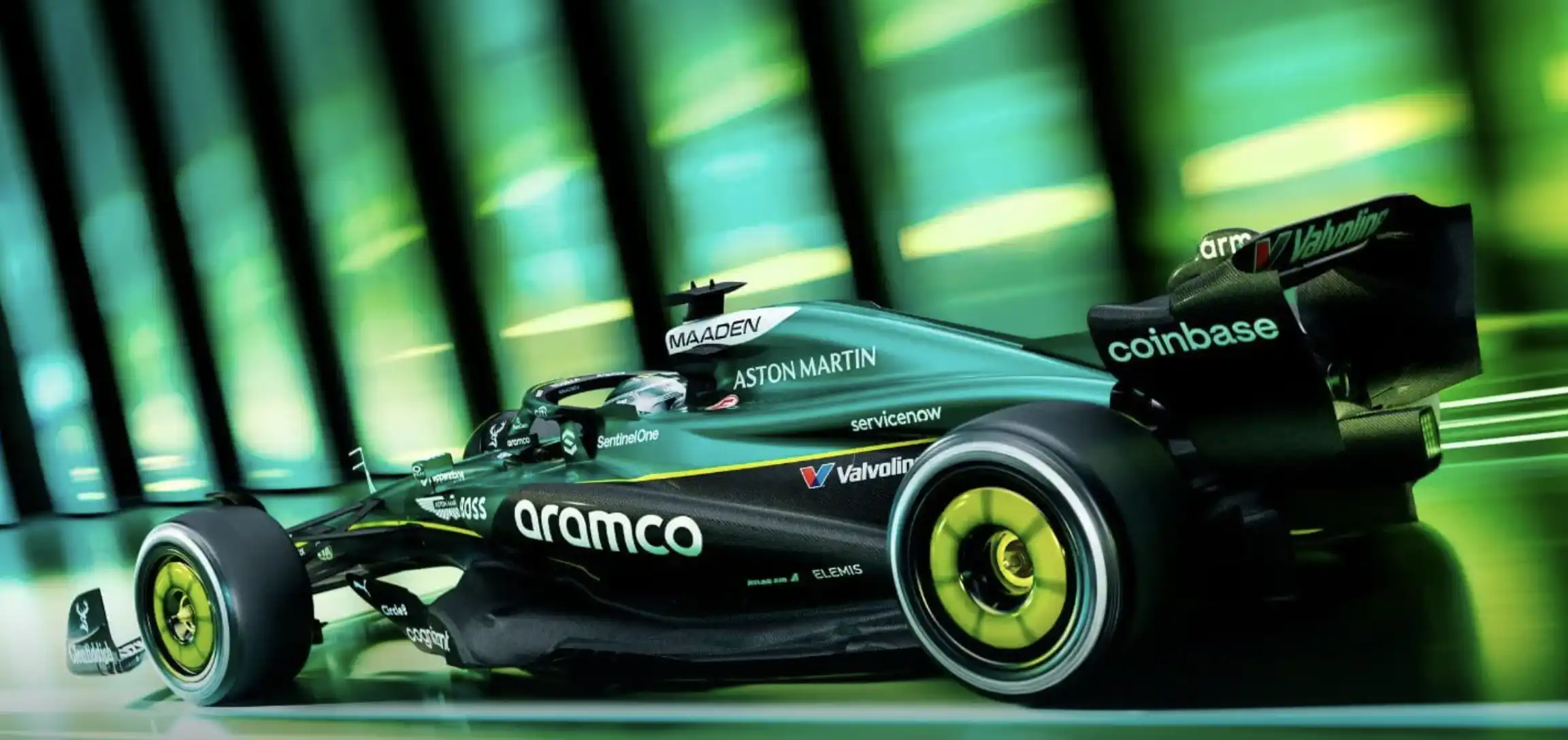
A notable aspect of this partnership is that Coinbase became the first team partner in F1 history to complete full payment using the USDC stablecoin. According to reports from Reuters and News.Bitcoin, the entire contract amount was settled by Coinbase through USDC issued by Circle, achieving a fully integrated payment process from signing to execution.
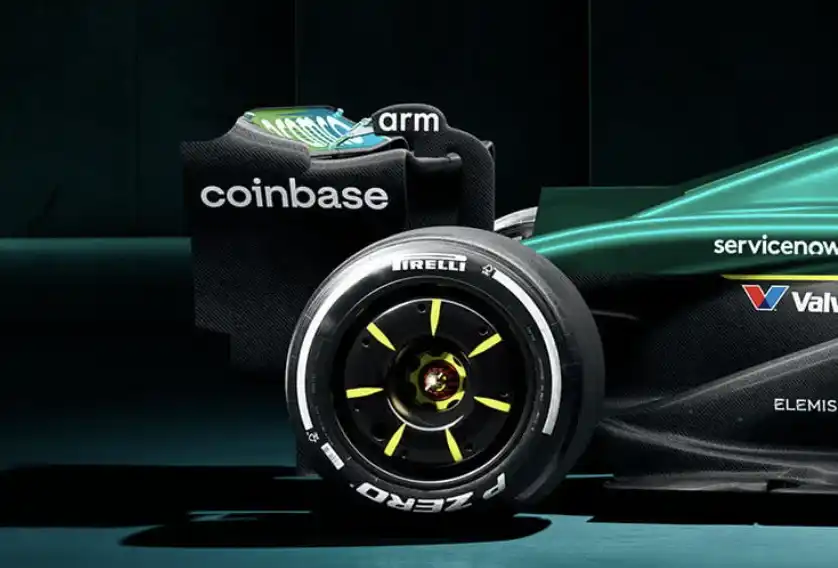
In terms of brand exposure, Coinbase's logo was placed in the most prominent positions on the AMR25 car, including the halo structure, rear wing end plates, and on the race suits of drivers Lance Stroll and Fernando Alonso. Especially in helicopter shots and close-ups, the high-frequency exposure of the halo area provided significant brand value for Coinbase.

OKX: McLaren Racing
In May 2022, OKX announced it would become the "chief crypto partner" of the McLaren F1 team, with a partnership spanning multiple seasons, confirmed to last at least until 2026.
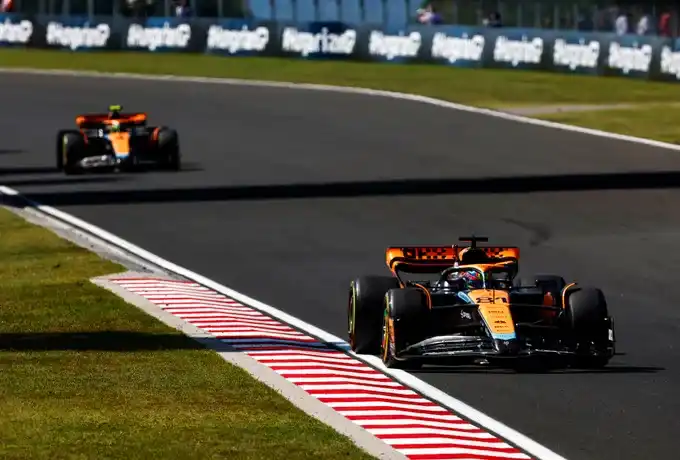
According to estimates from Marketing Brew, Coinspeaker, and others, OKX invests between $25 million and $50 million annually in this partnership, placing it in the mid-to-high tier of F1 crypto sponsorships. The OKX logo is displayed on the MCL36 and MCL60 cars in high-visibility areas such as the side pods, nose cone, and rear wing side plates, with driver gear also updated to feature the brand.
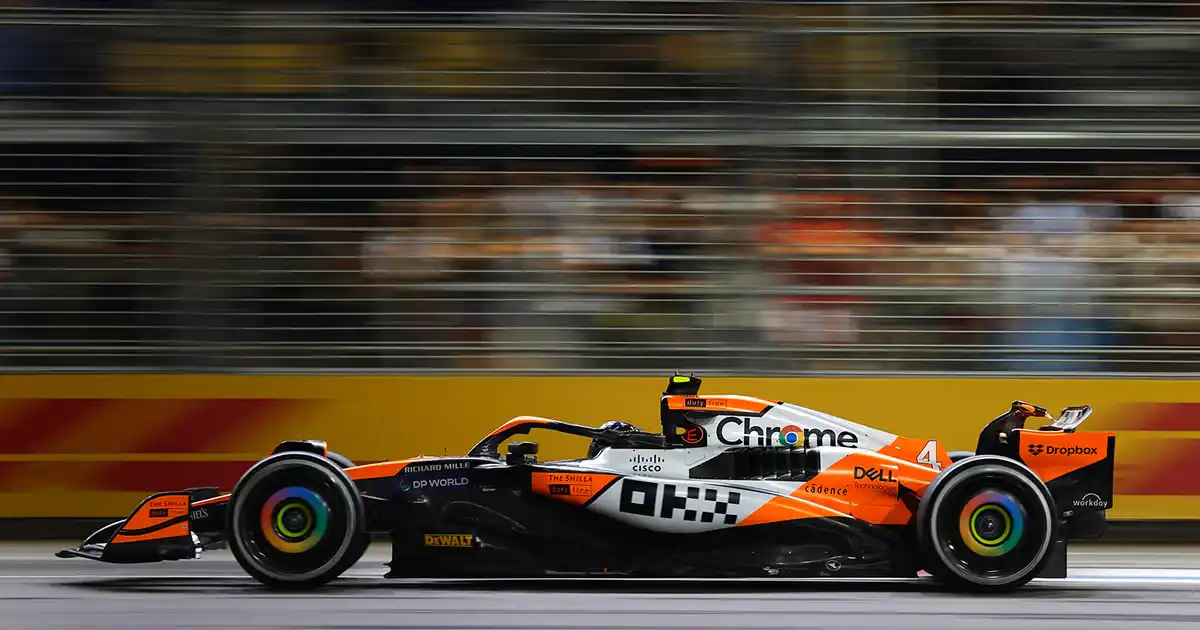
In addition to traditional brand exposure, OKX also launched a "Stealth Mode" themed car livery, combined with online social media content and short video marketing, accumulating over 1 billion social impressions and 180 million video views. McLaren officially released a thank-you statement after the 2024 season, publicly acknowledging the contributions of this crypto platform on a commercial level. Brad Pitt drove the McLaren MCL60 car during the 2023 season.

The F1 car that Brad Pitt previously drove is now in the office of OKX's headquarters in Singapore.
Bybit: Oracle Red Bull Racing
In early 2022, the crypto trading platform Bybit announced a partnership with the top F1 team Oracle Red Bull Racing, which was described as the "largest single-year cryptocurrency investment" ever made in international sports.
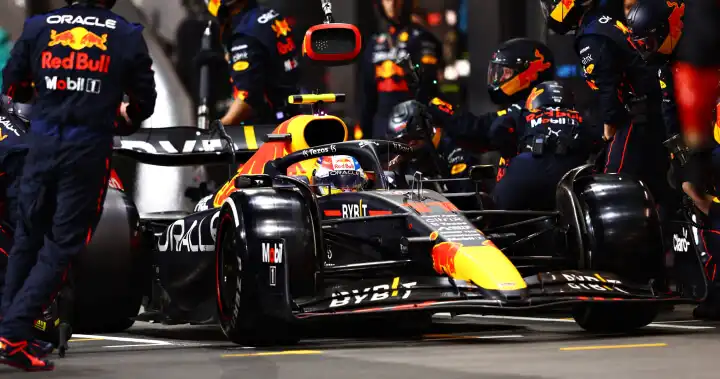
The partnership spans three years, with a total value of up to $150 million, averaging about $50 million per year, placing it among the top five F1 sponsorships that year.
Bybit's logo appears on the Red Bull cars' rear wings, front wings, and side pods. Drivers Verstappen and Perez also sport Bybit branding on their race suits and helmets. Additionally, Bybit is involved in Red Bull Racing's commercial plans, including esports driver training.
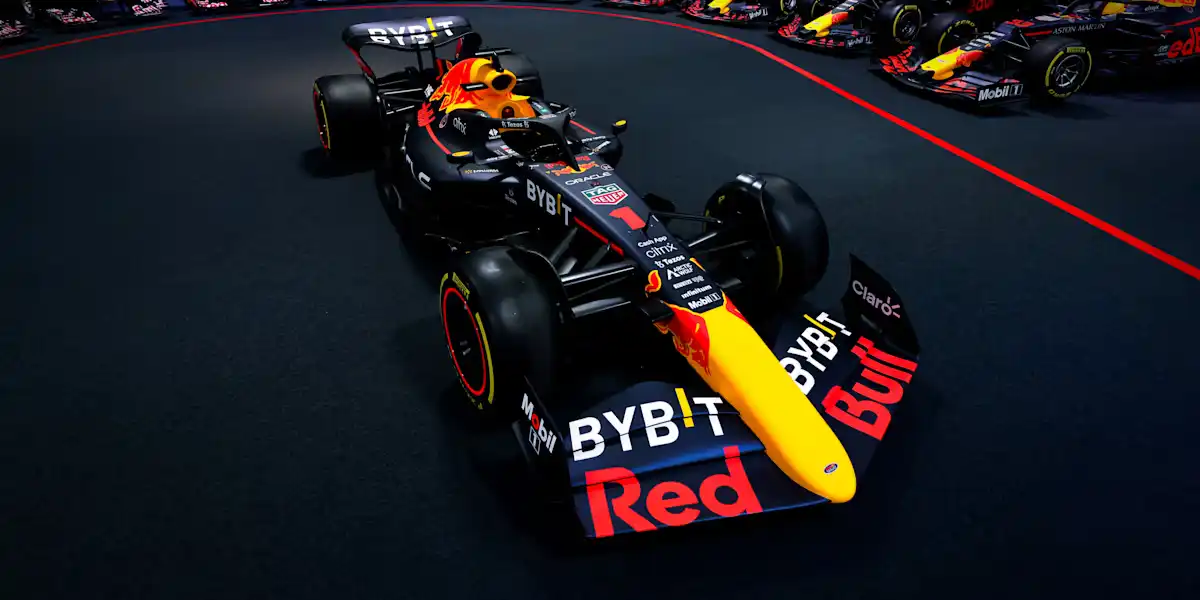
This period coincided with the peak of the Red Bull team. Starting in 2022, the team swept the Drivers' and Constructors' Championships for two consecutive years, with Verstappen breaking multiple F1 historical records and firmly establishing himself as the "new generation king of racing." Bybit leveraged Red Bull's global influence to further expand its user growth in the European and Asian markets. By the end of the 2024 season, Bybit announced it would not renew its contract with Red Bull, and the partnership naturally came to an end.
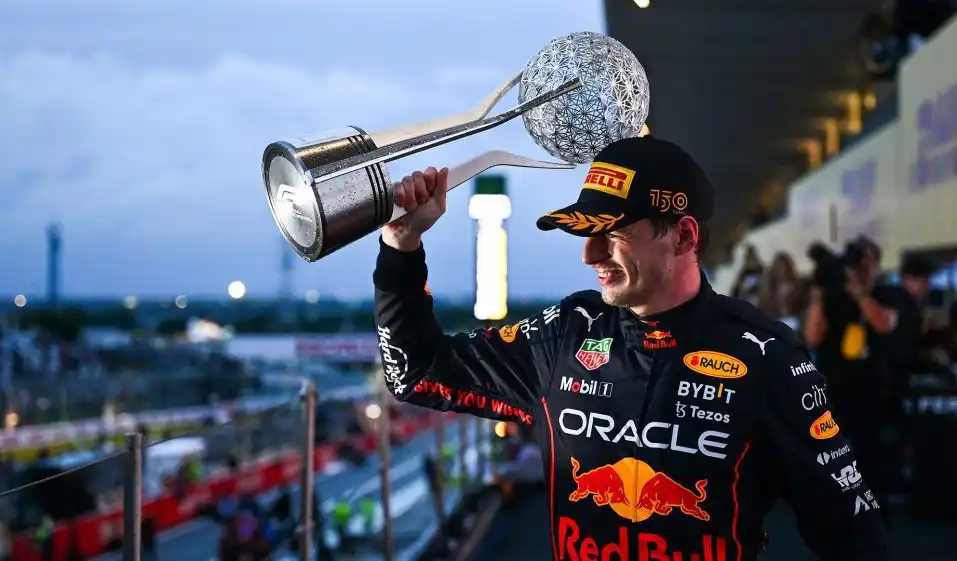
Gate: Red Bull Racing
In 2025, marking its 12th anniversary, Gate, a well-established trading platform, announced it would officially become the new official crypto trading platform partner of Red Bull Racing, succeeding Bybit as a sponsor of the top F1 team. It is estimated that the investment amount for this partnership exceeds $100 million, covering multiple seasons.
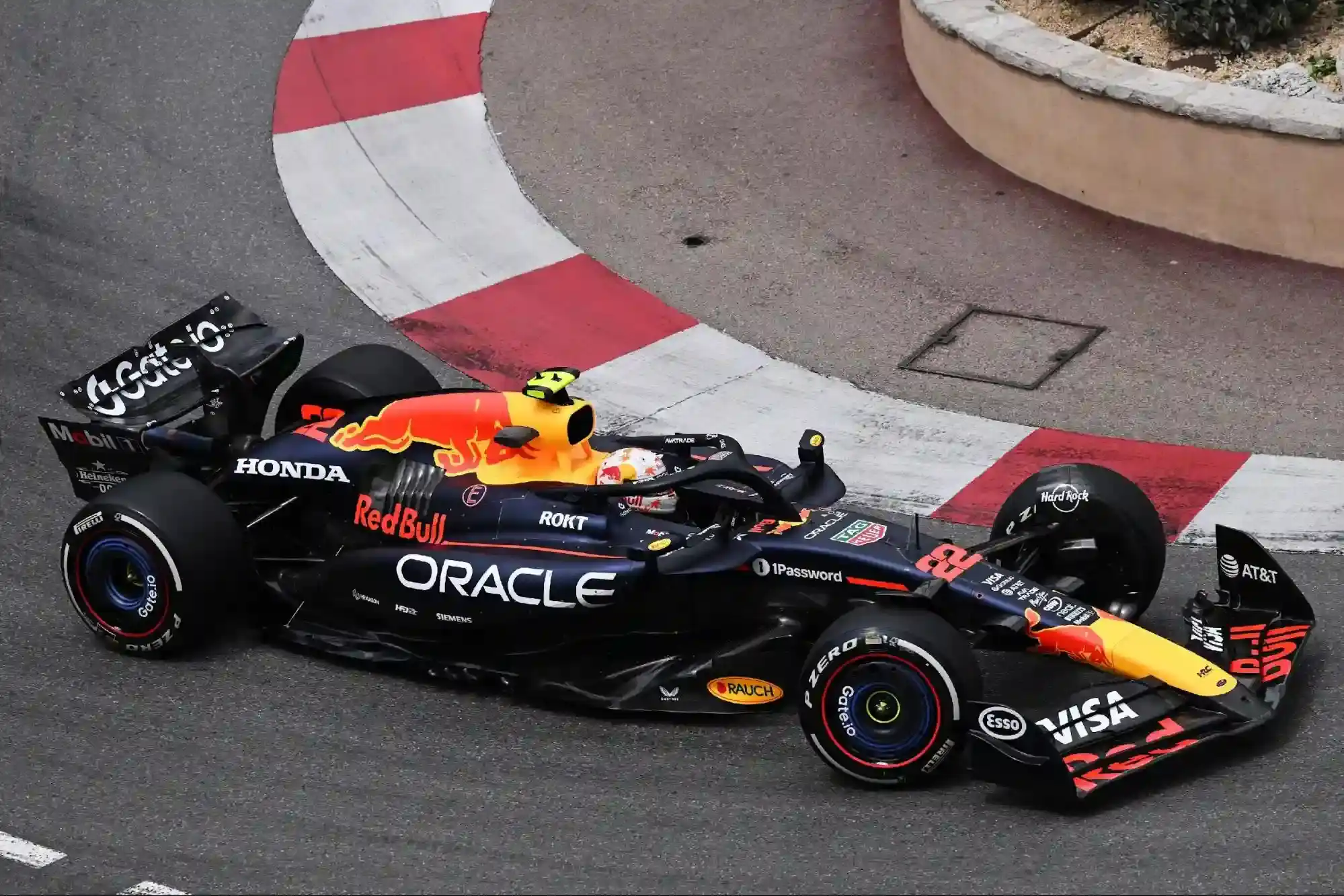
According to the details of the partnership, starting from the 2025 season, the Gate brand will appear in the most critical visual areas of the Red Bull cars, including the rear wing, headrest, chassis, team clothing, and the side of four-time world champion Max Verstappen's helmet. The high-frequency exposure of the brand logo will provide strong support for Gate to gain higher recognition globally.
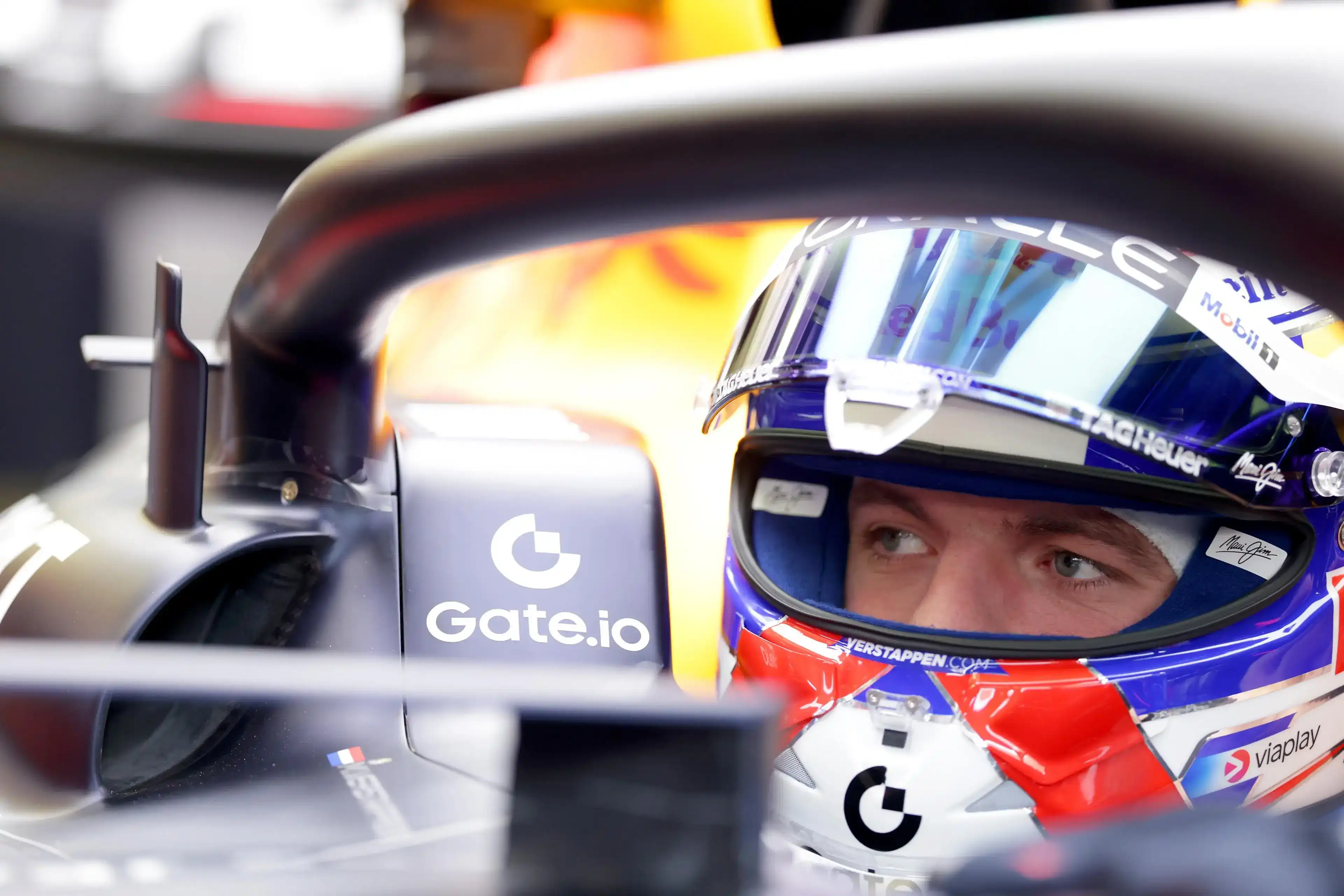
With trading platforms like OKX and Bybit entering F1, Gate's entry is seen as part of a "brand upgrade" initiative, marking further implementation of its international expansion strategy.
Binance: Alpine F1 Team
In February 2022, Binance reached a multi-level cooperation agreement with the French team Alpine F1 Team (formerly Renault F1, which was renamed Alpine F1 Team starting from the 2021 season), becoming its official crypto platform and NFT partner.
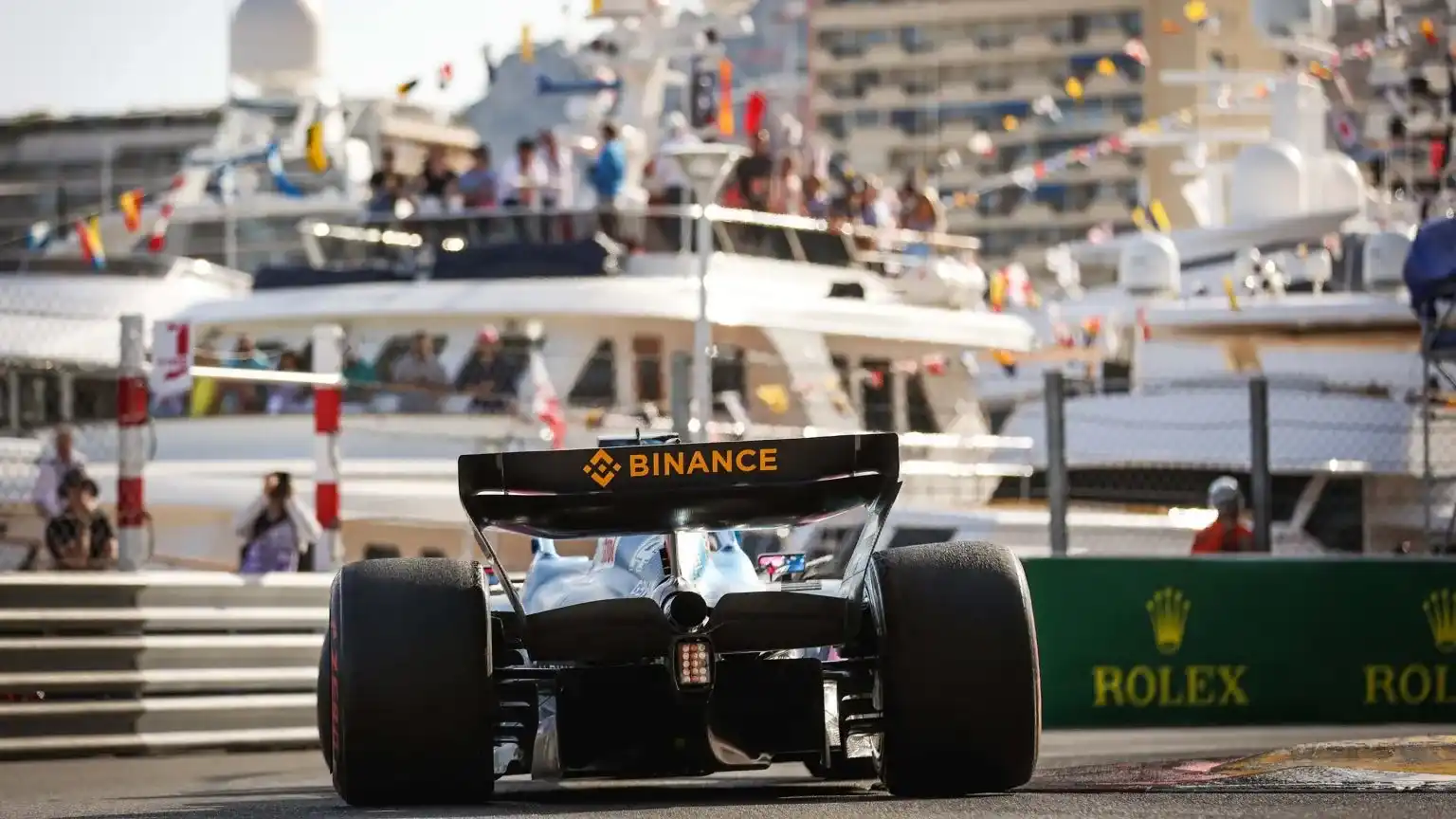
This partnership also led to the creation of the Alpine F1 team's fan token $ALPINE. On May 6, 2025, Binance launched the ALPINEUSDT perpetual contract, with a maximum leverage of up to 75 times, which surged over 47% on the same day.
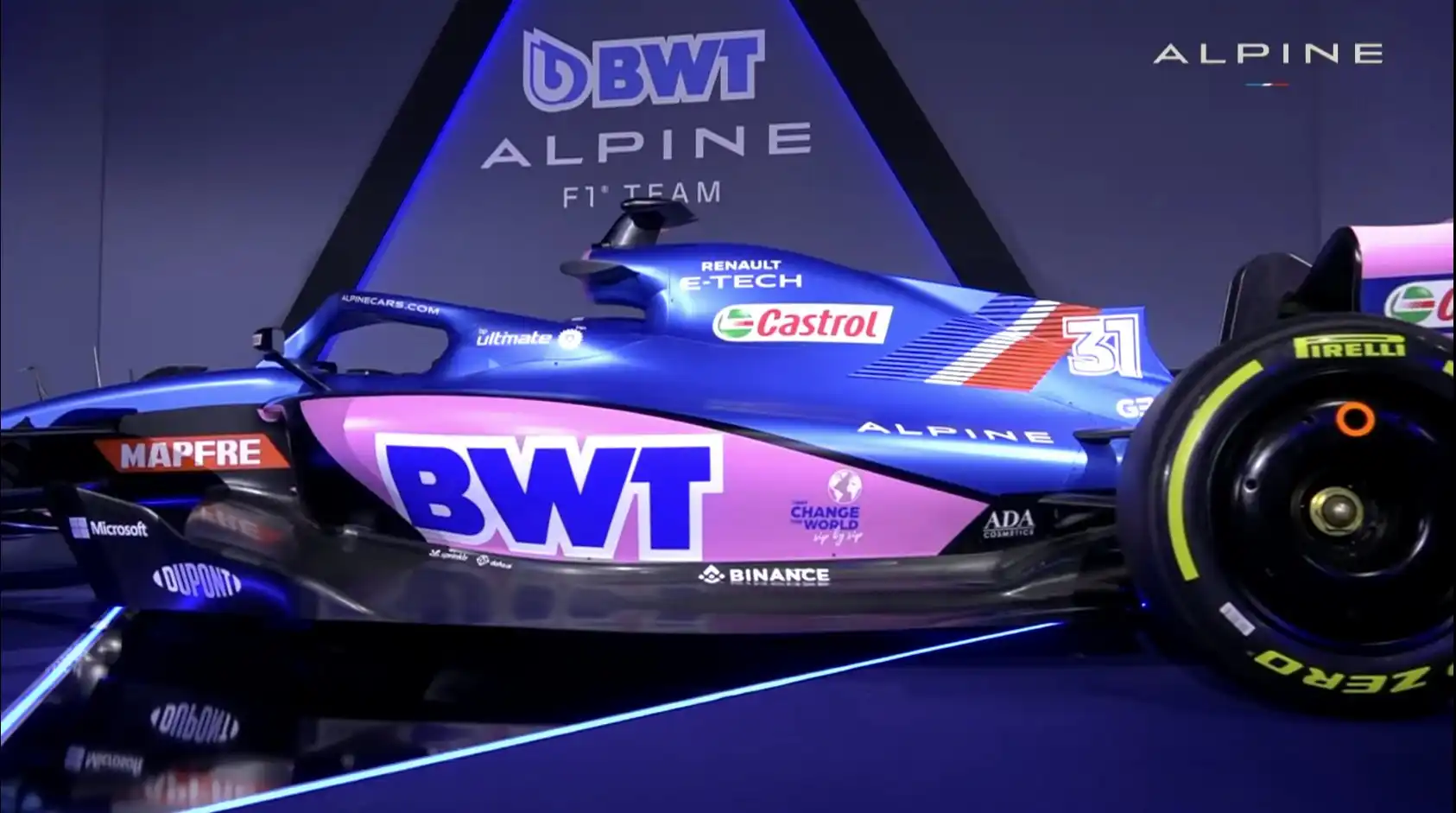
In terms of car visuals, the Binance logo appears on the side pods and rear wings of the Alpine A522 and A523 cars, as well as on the drivers' race suits and some garage areas. Although Alpine F1 has not ranked among the top teams, its collaboration with Binance to promote a Web3 fan community is one of the attempts to combine racing and crypto.
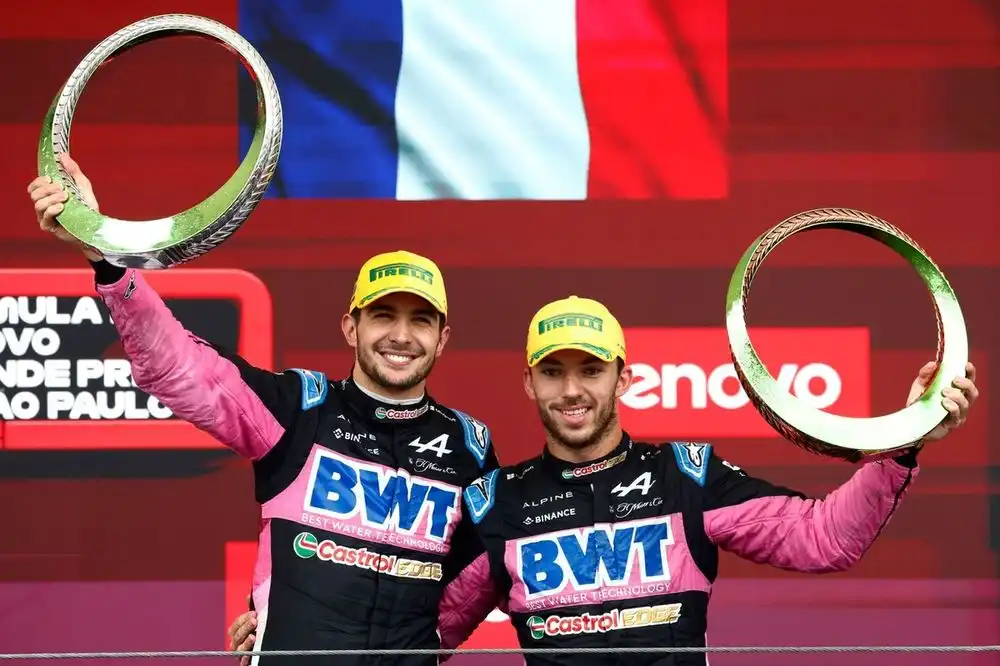
Kraken: Williams Racing
In March 2023, the crypto trading platform Kraken announced it would become the official crypto partner of Williams Racing.
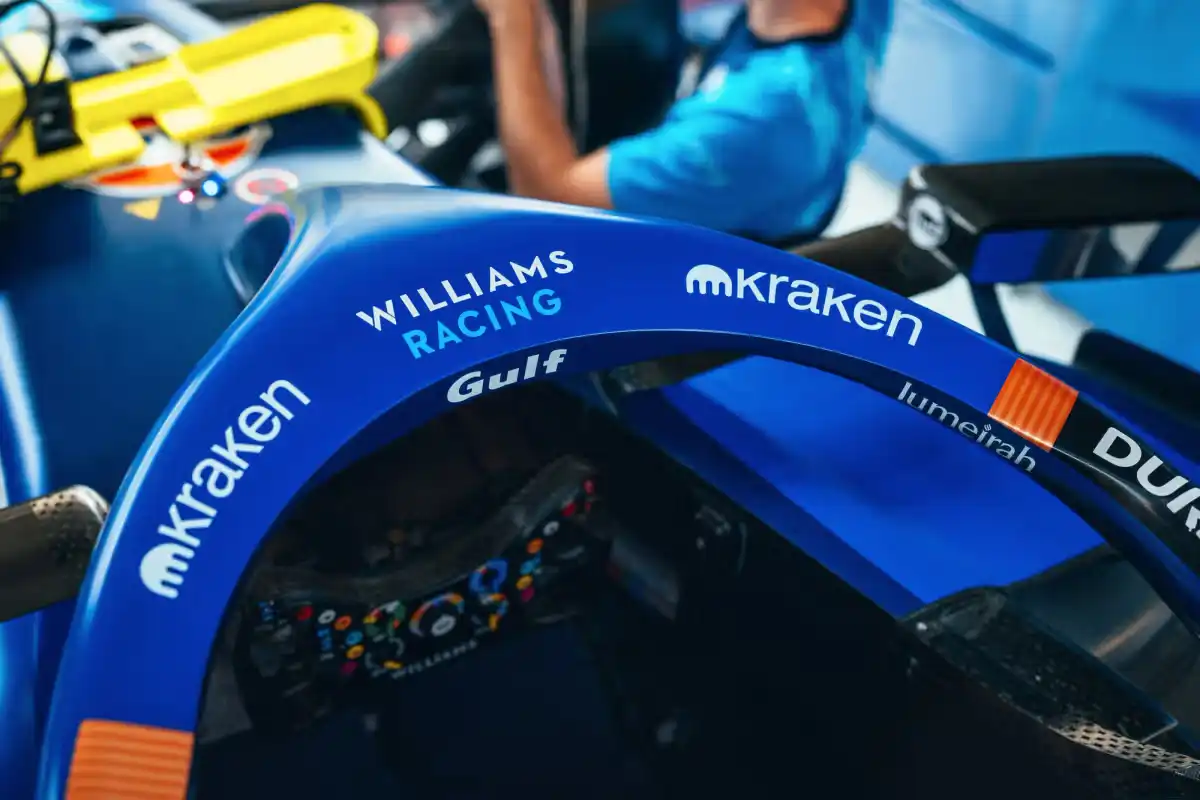
According to the partnership agreement, Kraken's logo appears in high-visibility areas such as the rear wing, front nose, and driver gear of the Williams FW45 car. Although Williams has been performing in the back rows in recent years, its long racing history, British background, and flexible partnership structure remain attractive.
As of the 2024 season, Kraken continues to be a primary partner of Williams and plans to extend the partnership into 2025 and beyond.
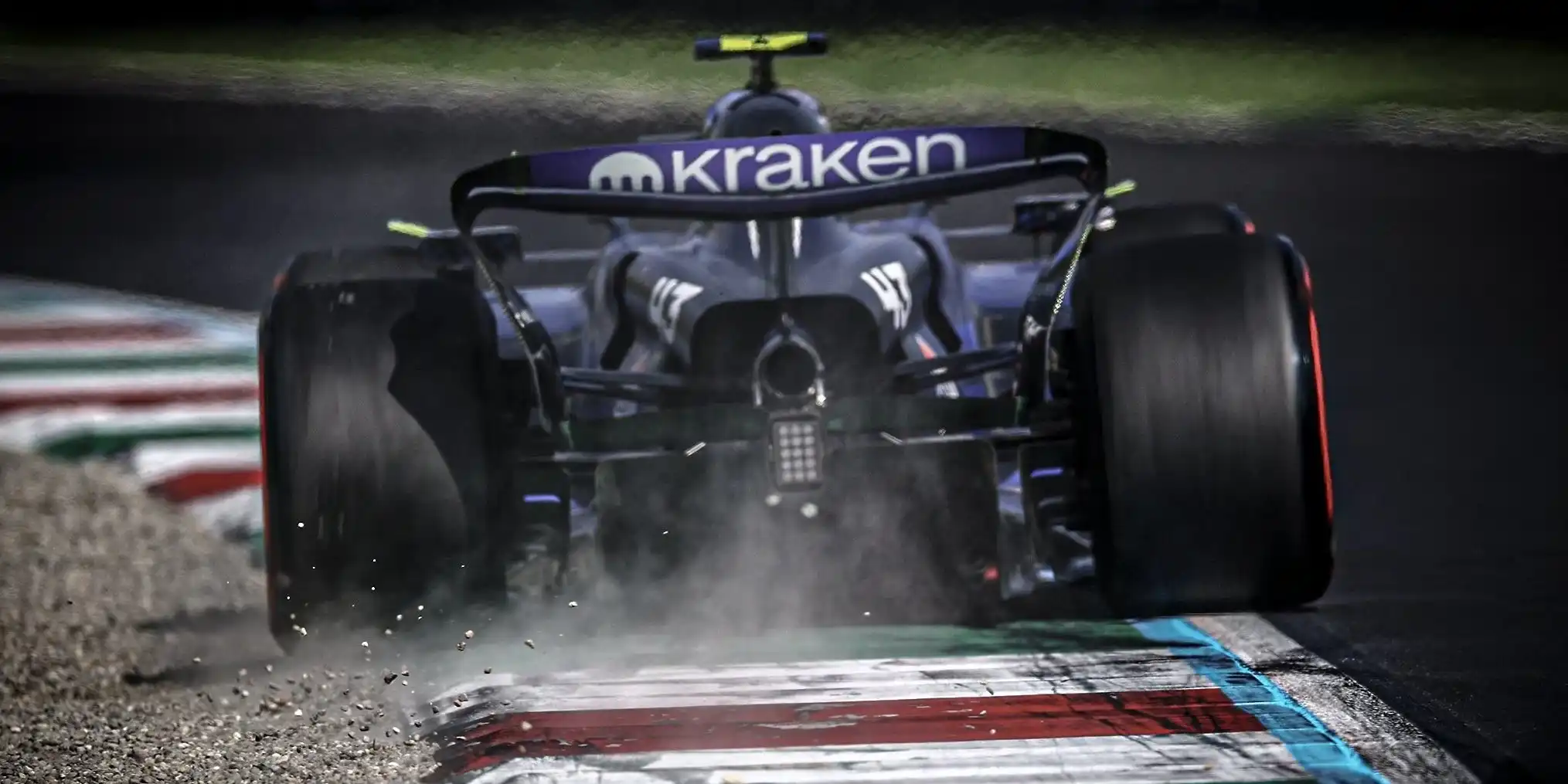
Why Do Crypto "Sponsors" Love F1 Teams?
Once upon a time, the main sponsors in F1 were tobacco giants. The red Marlboro and gold John Player Special brands dominated the entire scene during the Michael Schumacher era. However, starting in 2006, as tobacco advertising was strictly banned worldwide, these brands withdrew one after another, leaving F1 sponsorship positions vacant for a new generation of high-premium brands to fill.
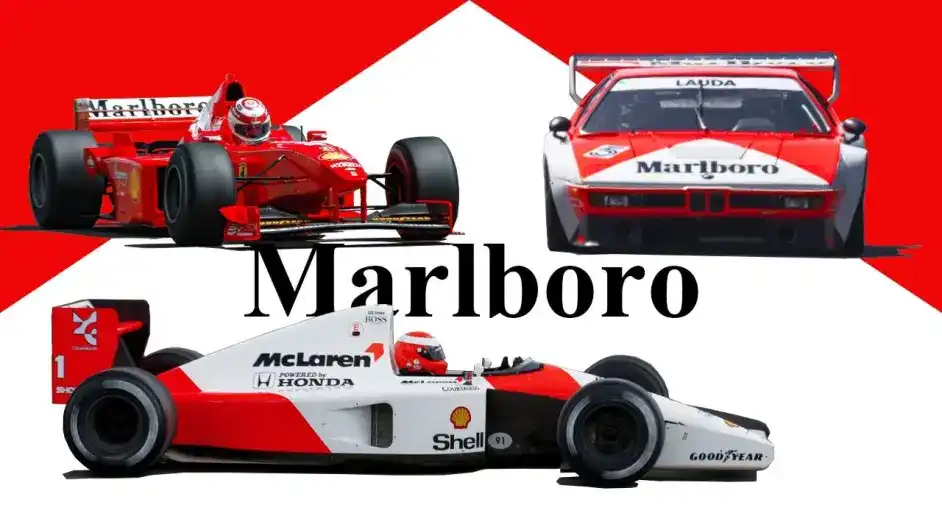
What followed were the gambling and financial services industries—two sectors closely related to risk, excitement, and high-net-worth individuals. From betting odds to asset management, these brands logically fit the "speed and passion" of F1.
Today, more and more logos have been replaced by familiar crypto trading platforms. Unlike the direct and explicit "gray area" of the gambling industry, crypto trading platforms are better at creating an atmosphere of "technology + future finance."
F1 has always been regarded as one of the "noble sports." The sense of speed, technological prowess, elegant tone, and elite temperament it conveys are culturally akin to golf, yachts, and antique watches. It naturally attracts those who possess wealth and are willing to pay for "identity," which is precisely the target audience of today's mainstream crypto brands.
What truly makes F1 sponsorship "sexy" is the resource network attached to it. F1 is essentially a closed resource domain centered around "old money." These circles include some historically wealthy European families and traditional organizations. There are unwritten rules within F1; if the F1 circle does not recognize you, even if you have money, you cannot enter.
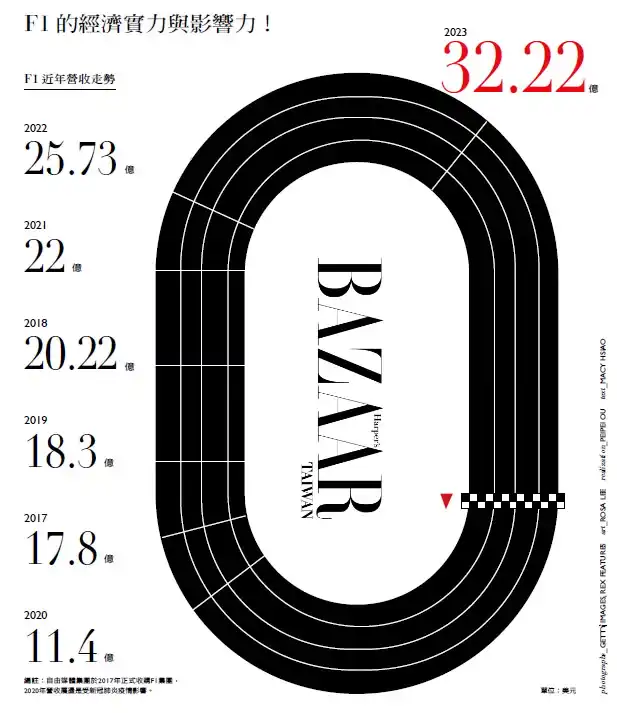
F1 Revenue Trends
From a business logic perspective, F1 is a closed circle constructed by "old money." Its barriers to entry are never just about money; they also include status, connections, and the recognition of "insiders." An investor who has long worked in the F1 circle once revealed: "F1 is a very closed circle, fundamentally structured around old money families, with a strong class consciousness. If this circle does not recognize you, no matter how much money you have, you cannot get in."
In such a domain, "sponsorship" is not just about logo exposure; it is a social entry ticket. It means you can walk into the pit area, obtain limited internal PR tickets, and directly converse with drivers, management, or sponsors. These tickets are not sold to the public; they are given to friends, family, investors, and the most core partners. Many businesses, collaborations, and financing deals are born in such paddocks.
This also explains why many crypto platforms are willing to spend tens of millions of dollars just to have their names printed on the side pods of McLaren, Red Bull, or Aston Martin cars—it is not advertising; it is identity. More accurately, it is a declaration of identity: I am qualified to be part of this world.
From a resource perspective, F1 venues are often global political and financial hubs—Monaco, Singapore, Abu Dhabi, Las Vegas… Each race is a gathering place for political and business elites. Compared to the conversion rates brought by an advertisement, this "quasi-Davos level" brand exposure is clearly more attractive to the crypto world.
For this reason, even top sponsorships costing upwards of $50 million a year still attract crypto industry sponsors in droves.
免责声明:本文章仅代表作者个人观点,不代表本平台的立场和观点。本文章仅供信息分享,不构成对任何人的任何投资建议。用户与作者之间的任何争议,与本平台无关。如网页中刊载的文章或图片涉及侵权,请提供相关的权利证明和身份证明发送邮件到support@aicoin.com,本平台相关工作人员将会进行核查。




